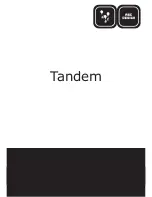
Switching-time optimisation
The controller can optimise the times for switching on/off with
regard to heating circuit 1. When optimisation mode is selected,
the controller calculates the latest possible switch-on time and
the earliest possible switching-off time based on the current
actual room temperature and the outdoor temperature. These
switching times are therefore variable. For this reason, start of
use and/or end of use of the area of the building supplied by
heating circuit 1 must be entered when the system operates in
optimisation mode under the ’PRO 1’ week program. For opti-
misation operation, the room-temperature actual-value signal
provided by a room-temperature sensor in the reference room
of heating circuit 1 is normally required; (if the signal is supplied
by the remote-control unit EGS 52/15, we recommend that this
unit be connected with 3 wires).
A model room temperature calculated by the controller is used
in place of the measured room-temperature value if optimisation
mode has been selected without a room-temperature sensor
(T
R1
) being installed.
SERV setting value
No.
Function
81
50
Building-cooling time constant
The building-cooling time constant (t
AK
) depends on the construction of the building and is the most
important parameter for optimised operation. If the thermal inertia of a building is low, the building will cool
down quickly (if no heat is supplied) and the building time constant has a rather low value. If thermal
inertia is high, the building will cool down slowly and the building time constant has a rather high value.
Building cooling at different cooling time constants and non-utilization times:
Thermal
inertia on the
building
Building time
constant
t
AK
(h)
Cooling at a room temperature of 20 ° C
and an outdoor temperature of 4 ° C
in 8 h
in 60 h
(K)
(K)
low
15– 40
6...3
16...12
medium
40–100
3...1
12... 7
high
100–200
1...0,5
7... 4
see SERV 87
(10...199) (h)
82
0.70
Comfort factor
The duration of the warm-up process calculated by the controller can be reduced by means of the comfort
factor, i.e. the controller will switch on at a later point of time than calculated. Low values for the comfort
factor result in lower room temperatures at start of use (= less comfort), higher values of the comfort
factor result in room temperatures at the beginning of use that are closer to the normal temperature
setpoint.
0,30
=
lowest possible comfort factor
1,00
=
maximum comfort factor
(0.30...1.00)
83
8
Super-heating value
The super-heating value determines the heating characteristic for the optimised warm-up phase. This
curve is shifted by the super-heating value and lies parallel above the heating characteristic for normal
operation. An increased super-heating value results in a shorter warm-up time.
(1...19) (K)
R
–
44
–
7 000458 003
















































